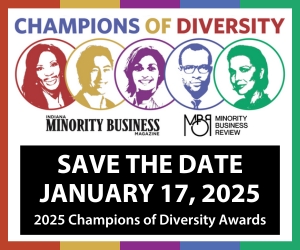By Keshia McEntire
Training in inclusivity and diversity has been common in most American workplaces since the late 1900s. Today, almost all Fortune 500 companies and about half of midsize businesses require diversity training. When done correctly, churches, not-for-profits, government institutions and businesses large and small can benefit from inclusivity training. However, according to a Harvard Business Review study titled “Why diversity programs fail,” many of these training sessions have proven at best ineffective or at worst detrimental. According to the study, these required trainings often trigger biases or cause backlash against underrepresented groups of people. Because of this, many organizations that conduct inclusivity training are taking a new approach.
The Society for Diversity is one such company. Based in Indianapolis, The Society for Diversity has served corporate, nonprofit, government and educational institutions across the nation ranging from local school districts to the US Air Force. Today, they claim to be the nation’s largest professional association dedicated exclusively to diversity and inclusion training.
Leah Smiley, the founder and president of the Society for Diversity, has done diversity and inclusion consulting for the past 13 years. She said one of the major ways the field of inclusivity training has evolved is in the notion of the training being only for the benefit of people of color and other underrepresented groups. When she does inclusivity training, she makes it clear how it will benefit the entirety of the organization.
“Be inclusive in your inclusivity training. Inclusion is not just making sure underrepresented groups are at the table; it also means we aren’t going to exclude individuals who are in dominant groups, such as white guys. Inclusion is for everyone to have an equitable experience in the workplace,” Smiley explained. “One of the challenges while doing diversity training is you have leaders who may be white men, and they are not really comfortable with understanding what diversity really is. They don’t really see how it can benefit them. Being able to connect with individuals on an inclusive level means helping people understand that even though they are white, they can benefit because they are diverse themselves. Only then will they say, ‘Let me learn more about what this is,’ and not assume, ‘It will only support some group I am not a part of.’”
In addition to the challenge of getting employers interested in inclusivity training, another roadblock is getting companies to see their need for it. Smiley thinks many companies see themselves as more inclusive than they are.
“They have an exaggerated view of their level of inclusion. They look at the organization and say, ‘Wow! We have a huge diverse population with women, minorities and immigrants!’ Those individuals are typically in lower-level positions. You may have a lot of African-Americans, but they are working in administrative positions and have not been able to rise to levels of leadership.”
Ascend, an Asian-American professional organization based in New York, would agree with Smiley’s assessment. In their study titled “Hidden in Plain Sight: Asian American Leaders in Silicon Valley,” they found that white men and women are 154 percent more likely to be an executive compared to their Asian counterparts.
“Having diverse people groups in lower levels creates an illusion of inclusion, but just because you have diversity doesn’t mean you are inclusive,” Smiley said. “Inclusion means communication, opportunity and interaction among different groups so that everyone has an equal opportunity to not just get in the door, but also advance through different levels of an organization.”
The end goal in inclusivity training should be a better work environment for employees and more productivity for the organization. And that, Smiley says, is something all organizations can get behind.
“When we do diversity training, we ask what the objective is. Every organization needs to think of how this training can help with their objectives, including making money, saving money or achieving organizational goals. It should result in concrete skills for employees to use to help the business,” said Smiley.
The Society for Diversity offers in-person training sessions, webinars and diversity certification. For more information on the Society for Diversity, visit societyfordiversity.org.











